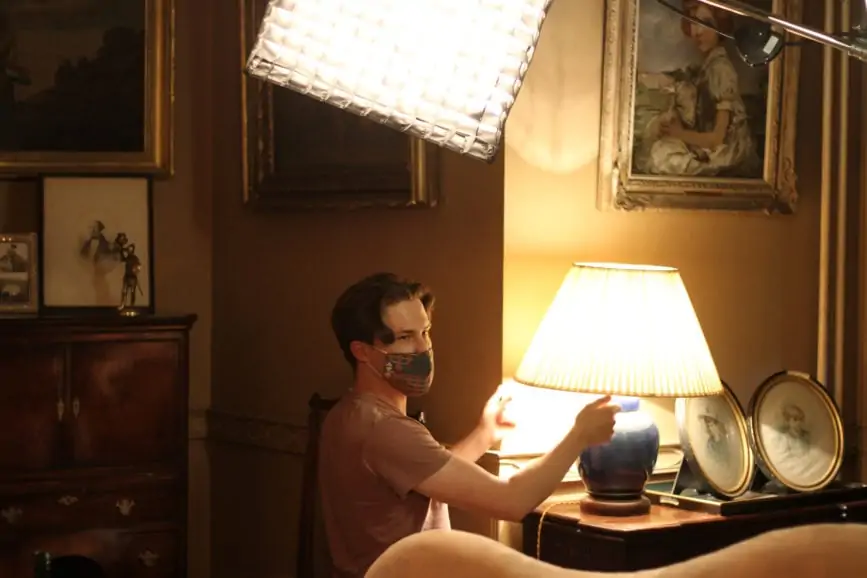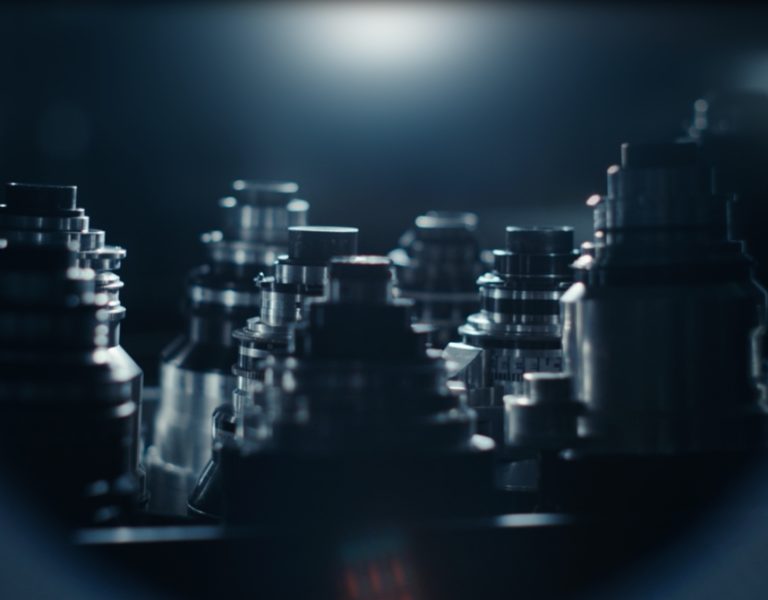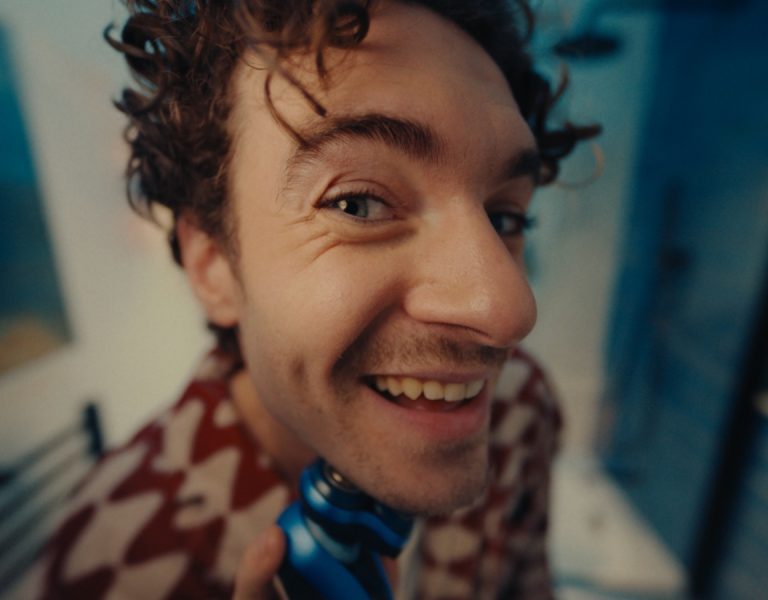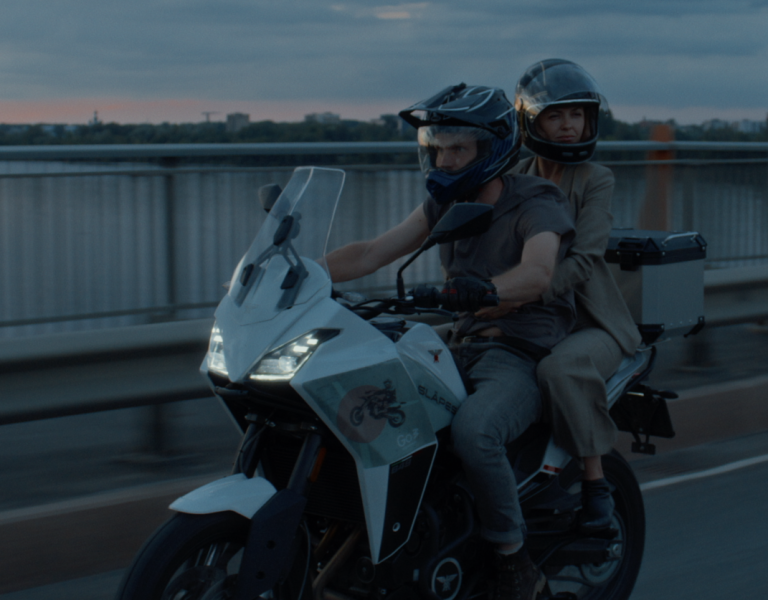
Overview: 1975 England. In exile, Cristina is a stranger to her own existence and her stepdaughter Lourdes’ whims are a constant reminder of what she is missing.
What were your initial discussions about the visual approach for the film? What look and mood were you trying to achieve?
The director Luís Zeferino and I have always found connection in the subtleties of cinematography. With M we wanted to take quite a classical approach whereby action plays out within the frame and we try not to draw too much attention to the persona of the camera. The two main characters are Cristina and Lourdes but the house is what forces them to have interactions so we always thought of it as a third player. Understanding how the women impact one another became key to building the visual language. The house could easily have become overly romanticised when it’s actually a prison for Cristina. Overall we wanted to achieve a heightened realism in which the cinematography supported the story but didn’t go out of its way to draw attention.

What were your creative references and inspirations? Which films, still photography or paintings were you influenced by?
Our references came from films including The Last Year in Marienbad and Phantom Thread. Painter Vilhem Hammershøi was a constant source of mood as was music and historical documentaries. Luís and I are both fans of developing master shots and blocking which allows shots to sustain for longer in the sequence of action. Conrad Hall ASC was a master of this and we’d reference his work regularly. We sought to go against the grain of period films to polish and romanticise the environment, instead employing somewhat faded and limited colour palettes which made the piece feel more sincere.
What filming locations were used? Were any sets constructed? Did any of the locations present any challenges?
The entire shoot was location based at Great Fulford near Exeter. This was a grand house with a long history but it had been lived in rather than being treated as a museum which was perfect for what we were after. Most of it was accurate to the period (1970s) if not older and for every room we shot in there were a couple more we could utilise dressing from so it became a real place of inspiration. Whilst the location was self-contained it was still large and with double and even triple height rooms we had to plan quite precisely around how best to utilise natural or additional light in order to make the most of the location and give us the time we needed in the schedule.

Can you explain your choice of camera and lenses and what made them suitable for this production and the look you were trying to achieve?
I’m very grateful to Panavision who supported us with the camera and lens package. We shot on the Alexa Mini with Primo Classics as well as an SLZ11 Zoom and a couple of Slant Focus lenses. We used these at a couple of points so that we could shoot with both characters facing front but not having to throw focus between lines which I’ve found can be distracting. Essentially, you can achieve a shot akin to having a split diopter but without having to hide the split, a really great option to have. I also used Low-con and Glimmer Glass filters of varying strengths for most of the production. I found this gave us a pleasing softness and took the edge off the digital format whilst still retaining clarity and not getting us into romanticised territory.
What role did camera movement, composition and framing and colour play in the visual storytelling?
In pre-production we developed the idea that we should only ever track when Cristina is feeling genuinely at peace within her surroundings; something that rarely happens. In some scenes she’s drifted off to sleep so we’re creeping slightly and then when she is awoken we pause as her anxiety returns. At another moment she’s in the bath remembering the former glory days when she could be herself, the music swells, we slide alongside and it’s almost like we’re in her mind back in Portugal.
This was always a story of two opposing views, the more rigid Cristina and the younger more liberal Lourdes and being able to spread them out when together in shot became really valuable so 2.39:1 was our preferred aspect and this was confirmed once we begun scouting locations.
Production designer Emanuela Piu put together a series of beautiful mood boards in pre-production which showed people alone in spaces in limited colour palettes but your focus still lingered on them, this was something we sought to achieve in a number of moments through collaboration with costume designer Eirini Kariori.

What was your approach to lighting the film? Which was the most difficult scene to light?
Cristina rarely affords herself the pleasure of the sunlight, she’s inflicting a type of isolation and punishment on herself by avoiding the outside world which used to be so much a part of her existence. The sun becomes attributed to step-daughter Lourdes who at times forces Cristina into the light through her actions. This gave us opportunities to explore semi-silhouettes and shadows whilst still suggesting window light as the source which we’d shape and augment.
Overall our goal with the lighting was to achieve a heightened realism that would highlight our characters in the often large manor rooms whilst also enhancing the feeling of isolation. Very rarely did we create sources that we couldn’t completely justify. For day interiors window light was kept consistent with an M40 on a scissor lift and then we’d use LiteMats and SkyPanels inside to augment.
For an extended night interior scene in a living room we worked mainly with tungsten units (rifas) to augment practical lights and then increased the saturation as the scene progressed. I always love the way tungsten looks on skin and I also love how it makes a set feel for the actors, they can sense their light more I think when it’s tungsten and react accordingly. This scene was the most tricky to keep consistent, a long dialogue scene shot over two days in quite a confined space. We wanted a limited almost one tone palette here which could be tricky to manage at times, I found my meter was my best friend and as long as maintained my ratios all was well.

What were you trying to achieve in the grade?
I’d worked with colourist Nigel Tadyanehondo in pre-production to develop a show LUT for use on set. Essentially it was a conversion from LogC to Rec709 but with a much smother highlight falloff and a little less green than the standard ARRI LUT. I’ve always preferred to get a healthy exposure on set so into this LUT we built a 1/3 stop pull, I’d meter at 640 but shoot at 800, meaning everything was overexposed 1/3 but the LUT would show us a correct exposure on set. Later we always had this extra 1/3 stop below middle grey to work with.
In the grade we always reminded ourselves of the importance of realism and Nigel was very sensitive in his work. We worked to make some of the spaces feel a bit more claustrophobic and pick out our characters within them and for our scenes that were more reliant on daylight Nigel was great in keeping the shots looking consistent. Despite not wanting to become a homage to period films, we did find there to be something slightly unsettling about seeing the period setting without any grain so we ended up using film emulation but mainly only in the highlights. I’m a lover of film and I’m so happy it’s seen a resurgence in recent years but I’m also incredibly excited about the possibilities of digital tools moving forwards.
Which elements of the film were most challenging to shoot and how did you overcome those obstacles?
A large portion of our pre-production was done remotely and, more disconcertingly, in isolation because of COVID-19. Luís was home in Portugal, our producer Ju Park was back in South Korea and most locations that might have been open to filming were suddenly shut down and staff furloughed. Keeping optimism in those early months was very tough when we were virtually scouting and discussing with no real certainty that the film would ever happen. We began scouting as the first lockdown eased and were shooting shortly after which led to a very intense period just before photography began. Here Luís’s humour and care for the team was paramount in getting us going on a good note despite all the turbulence up to that point.
What was your proudest moment throughout the production process or which scene/shot are you most proud of?
I’m sure we all wish we didn’t have to make this whilst adhering to COVID protocols but I’m really proud of the way everyone took on that challenge and it encouraged a new level of trust in each other which I hope remains. Personally, I’m proud of the character I added to the house and the overall visual coherence of the place. It was a beautiful, dramatic setting and it took restraint to pick the suitable way to show that instead of learning too far towards the lavish and excessive.

What lessons did you learn from this production you will take with you onto future productions?
Throughout my time at the NFTS I’ve really learnt the importance of believability in filmmaking. Cinematography is part of that but performance, production design and locations contribute to it massively and I’m always working on respecting that within my work. With M we’d always centre our discussions on what the script was saying and from that design, shot, lighting choices and so on that could live together within a coherent world would become clear. I hope to be able to continue that approach in my future work.
> DISCOVER MORE ‘FICTION’ FILMS FROM THE 2021 NFTS GRADUATE SHOWCASE
> GO TO BRITISH CINEMATOGRAPHER ‘HOME’ PAGE
> BACK TO TOP













